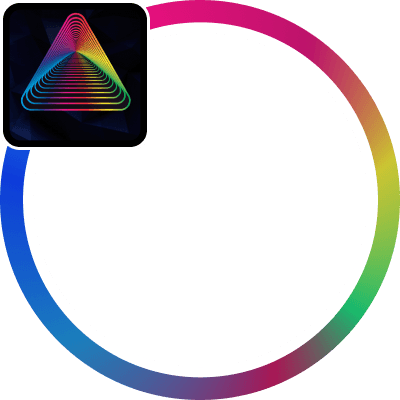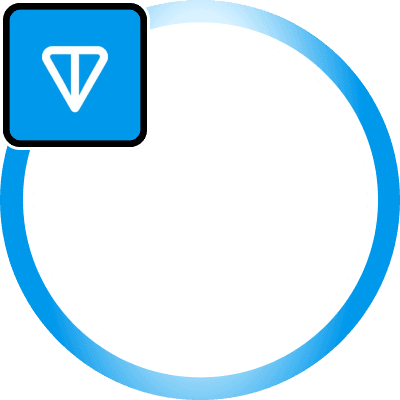Overview
EOS is a third-generation blockchain platform developed to support high-performance decentralized applications (dApps). The platform’s main focus is on providing scalability, low latency, and seamless developer integration, which is achieved through its use of Delegated Proof of Stake (DPoS) consensus. This consensus mechanism allows EOS to handle thousands of transactions per second, contrasting with earlier blockchains that are limited in throughput. By prioritizing a user-friendly ecosystem, EOS has positioned itself as a scalable alternative to Ethereum, particularly for developers requiring reliable and cost-effective infrastructure for complex applications.
EOS was initially launched by Block.one and became widely recognized after a record-breaking initial coin offering (ICO), raising over $4 billion. Over time, the community, represented by the EOS Network Foundation, has taken control of development, steering the platform’s roadmap and ensuring its decentralized governance model is in line with the broader community’s needs and interests. This governance structure, rooted in the DPoS mechanism, allows EOS stakeholders to vote on key network decisions, protocol upgrades, and the election of block producers responsible for validating transactions on the network.
Key Technologies
EOS incorporates several core technologies that provide a robust infrastructure for developers, users, and businesses looking to deploy decentralized applications.
EOS Virtual Machine (EOS VM)
The EOS Virtual Machine is an optimized WebAssembly (WASM) engine designed specifically for deterministic smart contract execution. The EOS VM allows for faster contract deployment, lower gas fees, and improved performance, providing developers with a reliable environment for executing complex dApp logic. This optimized WASM-based system significantly enhances execution efficiency and can support high-frequency applications, such as real-time gaming and financial trading applications.
Antelope Framework
The Antelope Framework is an open-source blockchain protocol that powers EOS and other blockchains in its ecosystem. This protocol supports modular architecture, making it highly adaptable to different use cases. Antelope enhances EOS’s interoperability and offers developers more flexibility for creating tailored blockchain applications. The Antelope Framework has gained traction beyond EOS, with similar implementations in blockchains like Telos and WAX, which leverage the same DPoS governance and technical underpinnings.
EOS EVM Compatibility
EOS supports Ethereum Virtual Machine (EVM) compatibility, enabling developers to deploy and run Ethereum-based applications within the EOS ecosystem. This EVM integration is intended to ease the transition for Ethereum developers, offering them EOS’s scalability and performance benefits without requiring them to rewrite their existing Solidity smart contracts. EOS EVM facilitates cross-chain compatibility, enabling users to interact with both Ethereum-based assets and EOS-native assets within a single platform. This interoperability is increasingly important as multi-chain solutions grow within the blockchain landscape.
Consensus Mechanism: Delegated Proof of Stake (DPoS)
EOS employs a Delegated Proof of Stake consensus mechanism, designed to provide a secure and efficient alternative to traditional Proof of Work (PoW). In DPoS, token holders elect a set number of block producers to validate transactions and maintain the network. This system reduces computational demand and ensures a more sustainable and cost-effective approach, as block producers are regularly rotated through community voting, enhancing decentralization while retaining scalability. The DPoS structure also supports near-instant finality for transactions, making EOS suitable for applications requiring high throughput and low-latency responses.
Governance and Community
The EOS blockchain is governed through a decentralized model that allows token holders to vote on network issues, block producer selection, and funding allocation for new projects and development efforts. The EOS Network Foundation (ENF), an organization formed to support the community’s governance structure, plays an active role in leading core development initiatives and ensuring alignment with the platform’s long-term vision. ENF is dedicated to decentralization, community inclusivity, and open collaboration, regularly engaging the EOS community in discussions on governance and improvement proposals.
EOS governance incorporates a feature known as Worker Proposal System (WPS), through which community members can submit proposals for funding. Token holders then vote on these proposals, and successful initiatives receive funding directly from the EOS treasury. This model supports community-led innovation and ensures that network funds are allocated transparently and democratically.
Development Ecosystem and Tools
EOS offers an extensive suite of development tools and resources to empower dApp developers. The EOSIO software, on which EOS runs, provides developers with Software Development Kits (SDKs), command-line tools, and APIs that streamline the creation, testing, and deployment of dApps. The EOS Network documentation includes tutorials, guides, and developer support forums, creating an accessible environment for both experienced developers and newcomers to the blockchain space.
EOSIO
EOSIO is the underlying software framework that empowers the EOS blockchain, enabling its high-performance infrastructure and scalable design. Developed by Block.one and now maintained by the EOS community, EOSIO provides a foundational layer that supports the rapid deployment and efficient management of decentralized applications (dApps) in the EOS ecosystem. EOSIO’s open-source architecture also allows the community to adapt and evolve the software, enhancing its capabilities through ongoing contributions and updates.
EOSIO’s Architecture and Virtual Machine (VM) Optimization
At the heart of EOSIO’s infrastructure is the EOS Virtual Machine (EOS VM), a specialized WebAssembly (WASM) engine crafted to handle the demanding computational needs of dApps with precision. Unlike standard WASM engines, EOS VM is tailored for deterministic smart contract execution, facilitating rapid processing and reducing latency. This enables developers to deploy complex applications that require consistent, high-frequency transactions, such as gaming platforms and DeFi solutions, while minimizing the performance trade-offs common in other blockchain environments. The VM’s optimization ensures that EOS can handle the high-throughput demands of modern dApps without compromising reliability.
Consensus and Governance Integration
EOSIO supports EOS’s Delegated Proof of Stake (DPoS) consensus, where EOS token holders elect a rotating group of block producers to manage and validate transactions. This DPoS mechanism reduces the computational burden associated with traditional Proof of Work systems, supporting higher transaction speeds while promoting a decentralized governance model. Through DPoS, EOS stakeholders have an active role in the network’s evolution, including block producer selection and participation in governance decisions. This model fosters a balance between scalability and decentralized oversight, aligning with the EOS community’s collaborative approach to ecosystem development.
Ecosystem Development and Tooling Support
EOSIO’s architecture includes a broad toolkit designed to simplify and enhance dApp development on EOS. From Software Development Kits (SDKs) to extensive API libraries, these resources support developers in building, testing, and deploying applications efficiently. EOSIO’s documentation and community-driven resources further reinforce its role in the EOS ecosystem by lowering entry barriers for new developers and encouraging innovation. This supportive infrastructure has contributed to a diverse array of applications and services in the EOS ecosystem, broadening EOS’s reach across various sectors, including finance, social media, and digital content.
Recent Developments and Roadmap
EOS has recently undergone several critical upgrades, aimed at improving scalability, security, and overall network performance. In September 2024, EOS introduced the Savanna consensus algorithm as part of its Spring 1.0 upgrade, which replaced the previous consensus method with a faster and more resilient system. The upgrade represents EOS’s commitment to advancing its blockchain infrastructure to meet the demands of more sophisticated decentralized applications and enterprise solutions.
EOS has also expanded its ecosystem partnerships, working with other blockchain platforms and projects to enhance interoperability and broaden its appeal to developers across different networks. The EOS Network Foundation continues to explore collaborations that will enhance EOS’s position within the broader blockchain ecosystem, particularly with multi-chain solutions and decentralized finance (DeFi) applications.
Use Cases and Applications
EOS supports a wide array of use cases, appealing to developers in finance, supply chain management, gaming, and content creation. Notable applications on the EOS network include DeFi protocols, Non-Fungible Token (NFT) platforms, and decentralized social media. The platform’s high transaction speed and low fees make it particularly attractive for applications that require frequent transactions, such as financial trading platforms and gaming dApps. Additionally, with the introduction of EOS EVM, many Ethereum-native applications have begun exploring EOS as a scalable solution for reducing costs while retaining the functionality of the Ethereum ecosystem.
Conclusion
EOS remains a prominent player in the blockchain space, with a unique approach that blends high performance with democratic governance and interoperability. As blockchain technology continues to evolve, EOS aims to stay at the forefront of innovation by focusing on scalability, developer-friendly tools, and a strong commitment to community-driven governance.









